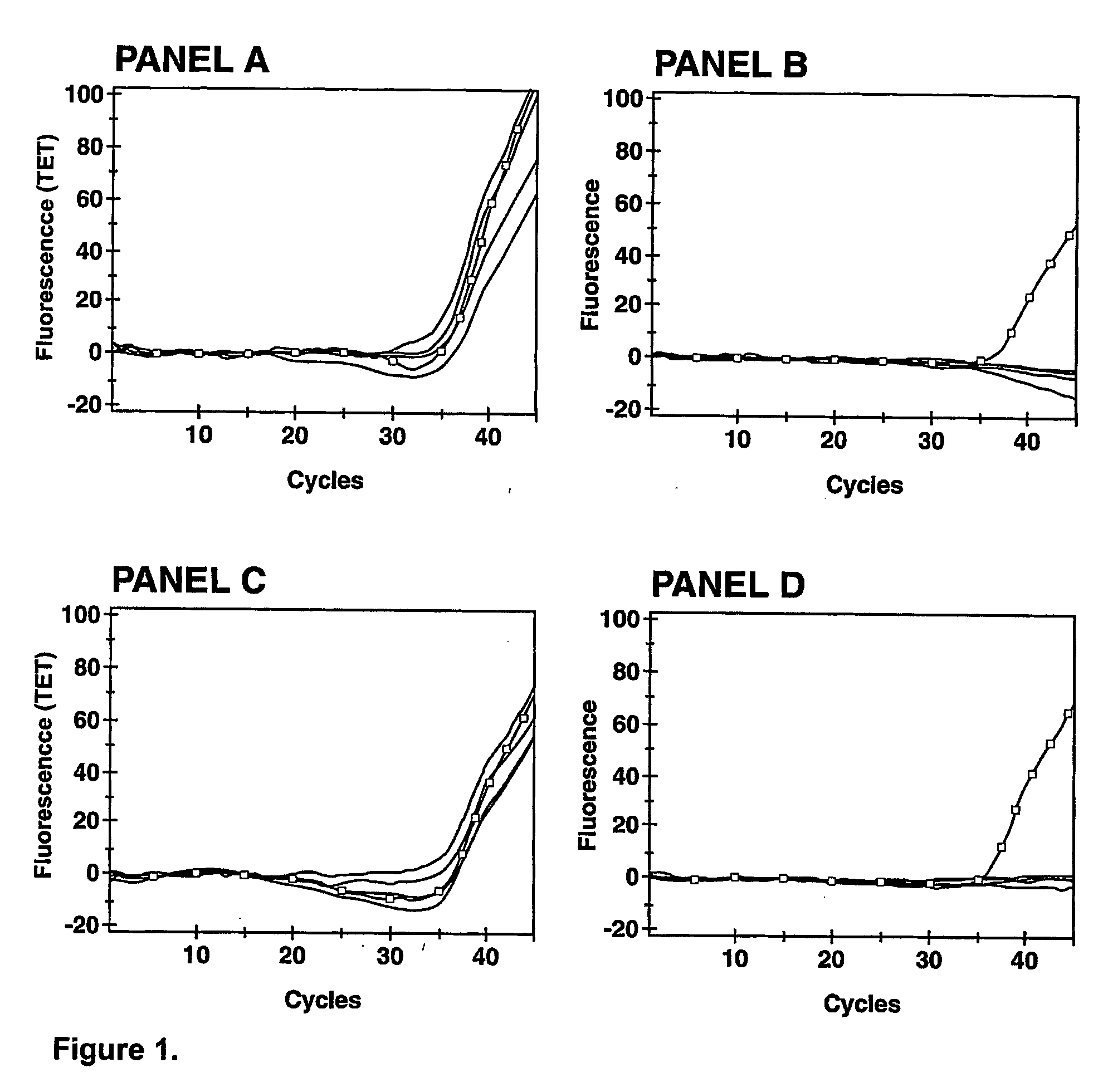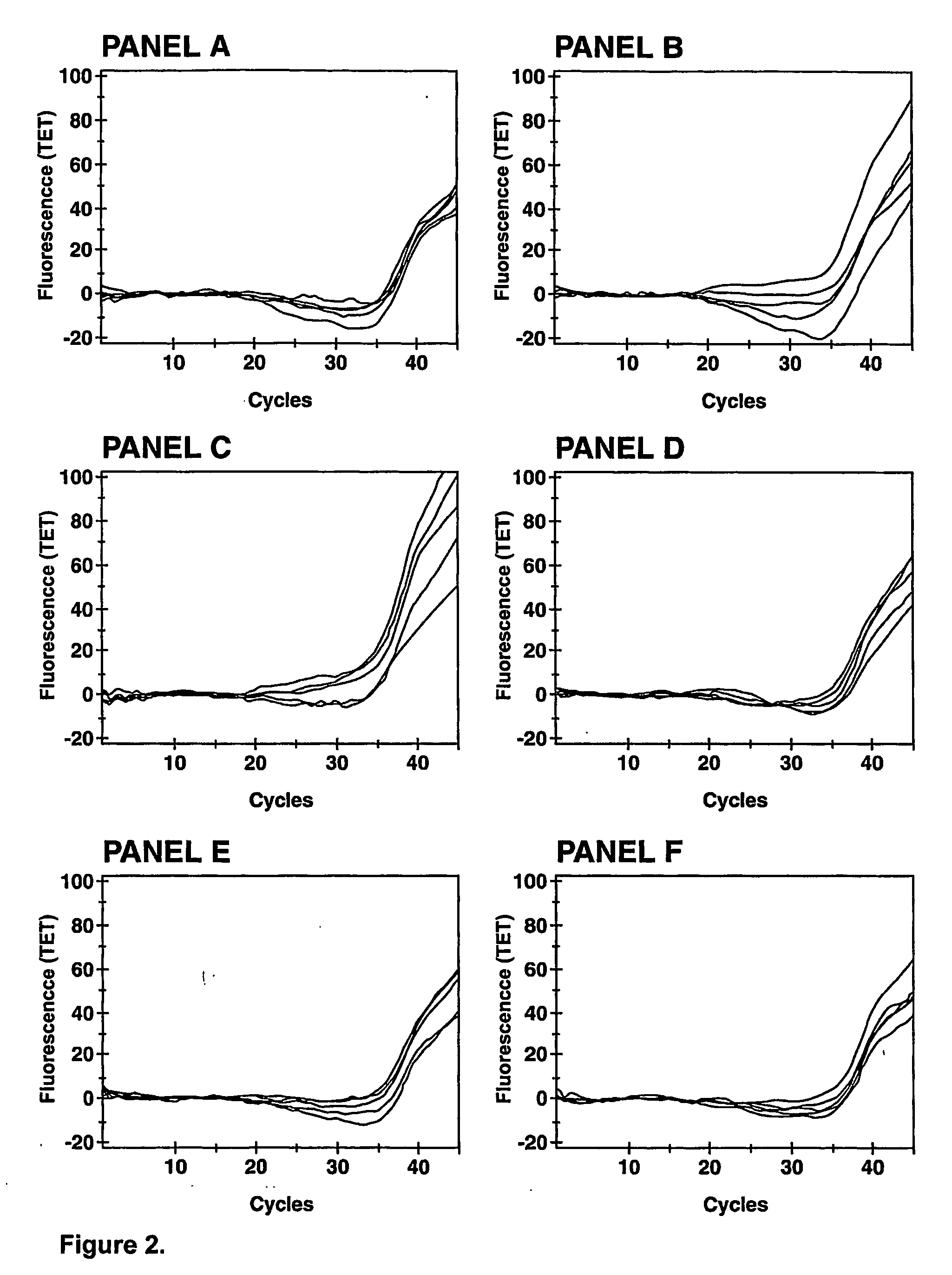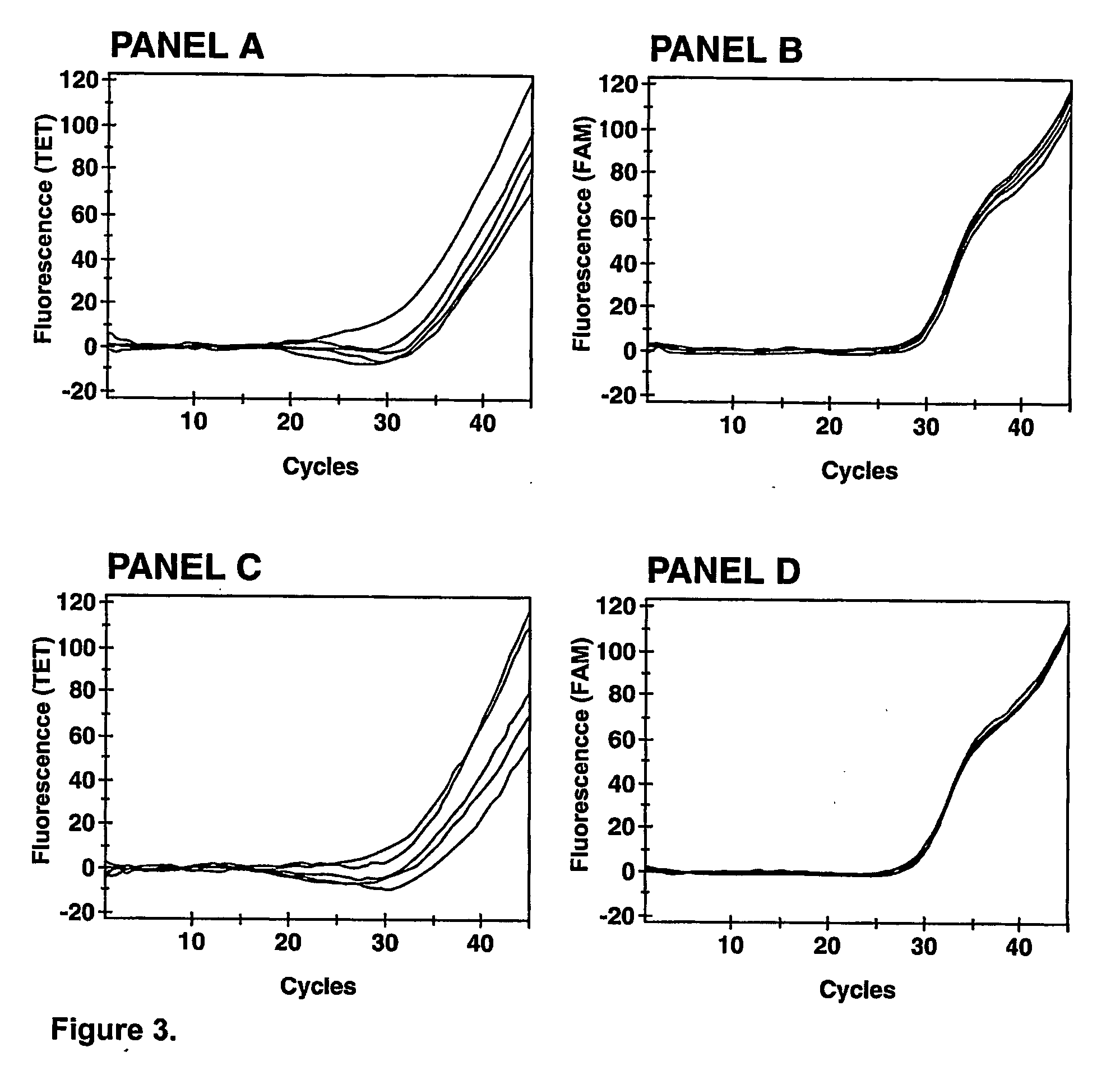Biological reagents and methods to verify the efficiency of sample preparation and nucleic acid amplification and/or detection
a technology of biological reagents and methods, applied in the direction of microorganism lysis, microorganism testing/measurement, dna preparation, etc., can solve the problems of inability to monitor the efficiency of amplification and/or detection procedures, inability to obtain nucleic acid from gram-positive bacteria and yeast cells, and inability to obtain nucleic acid from external controls. , to achieve the effect of affecting the efficiency of the nucleic acid releas
- Summary
- Abstract
- Description
- Claims
- Application Information
AI Technical Summary
Benefits of technology
Problems solved by technology
Method used
Image
Examples
example 1
Cellular ICSPAD using E. coli Cells Applied to the Detection of Group B Streptococci from Vaginal / Anal Swabs
[0083]Streptococcus agalactiae, the Group B streptococcus (GBS), is responsible for a severe illness affecting neonate infants. The bacterium is passed from the healthy carrier mother to the baby during delivery. To prevent this infection, it is recommended to treat expectant mothers susceptible of carrying GBS in their vaginal / anal flora. Carrier status is often a transient condition and rigorous monitoring requires culture-based classic bacterial identification weeks before delivery. To improve the detection and identification of GBS the inventors have developed a specific and sensitive PCR test which is rapid enough to be performed at delivery (Ke et al., 2000, Clin. Chem. 46:324-331; Bergeron et al., 2000, New Engl. J. Med. 343:175-179).
[0084] Clinical specimens. Vaginal / anal swabs were collected from consenting pregnant women admitted for delivery at the Centre Hospital...
example 2
Preparation of Bacillus globigii Spores
[0094]Bacillus globigii spores were generated in a sporulation agar medium composed of the following reagents (by liter of solution): 5 g peptone, 3 g beef extract, 5 mg manganese sulfate, and 15 g agar, final pH 6.8 at 25° C. B. globigii cells were first grown overnight at 35° C. on blood agar (tryptone soy agar plus 5% sheep blood). The sporulation agar medium was then inoculated with colonies from the blood agar and incubated overnight at 35° C., followed by an incubation at room temperature for 10 days. Subsequently, the level of sporulation was evaluated using a Petroff-Hausser counting chamber.
[0095] Bacterial colonies, consisting of approximately 90% spores and 10% vegetative cells, were resuspended in 1 mL of 1% Triton X-100™ by vortexing vigorously for 2 min. Cells were centrifuged for 2 min at 10000 g. After discarding the supernatant, the cell pellet was washed once in 1% Triton X-100 by vortexing vigorously for 2 min. Cells were t...
example 3
Use of ICSPAD IC Template Naturally Found in B. globigii Applied to the Detection of Methicillin-Resistant S. aureus from Nasal Swabs
[0096]Staphylococcus aureus is a major pathogen causing a wide spectrum of clinical manifestations, such as wound infections, pneumonia, septicemia, and endocarditis. Beta-lactam antimicrobial agents are the preferred drugs for serious S. aureus infections. However, since the introduction of methicillin into clinical use, methicillin-resistant S. aureus (MRSA) strains have emerged worldwide as important nosocomial pathogens and the prevalence of these strains in the community is now increasing substantially.
[0097] The inventors have developed a real-time multiplex PCR assay useful for the detection of MRSA directly from specimens containing a mixture of staphylococci (PCT patent publication PCT / CA02 / 00824). This assay comprises a primer targetting type iv SCCmec right extremity sequences used in combination with a primer and a molecular beacon probe ...
PUM
| Property | Measurement | Unit |
|---|---|---|
| Efficiency | aaaaa | aaaaa |
Abstract
Description
Claims
Application Information
 Login to View More
Login to View More - R&D
- Intellectual Property
- Life Sciences
- Materials
- Tech Scout
- Unparalleled Data Quality
- Higher Quality Content
- 60% Fewer Hallucinations
Browse by: Latest US Patents, China's latest patents, Technical Efficacy Thesaurus, Application Domain, Technology Topic, Popular Technical Reports.
© 2025 PatSnap. All rights reserved.Legal|Privacy policy|Modern Slavery Act Transparency Statement|Sitemap|About US| Contact US: help@patsnap.com



